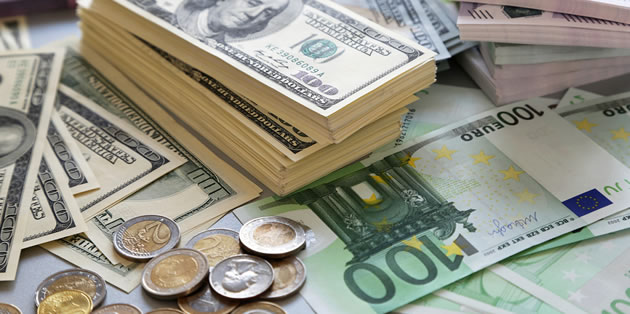Euro US Dollar (EUR/USD) Exchange Rate Slumps as Investors Flock to the Dollar
UPDATE: The Euro US Dollar (EUR/USD) exchange rate continued to slump this afternoon, trading at around -2.3% lower. This left the pairing trading at around $1.0757.
The single currency slumped further against the Dollar this afternoon as market volatility increased after the Bank of England (BoE) announced its second emergency rate cut this month.
The BoE slashed rates to a record low of 0.1% due to the growing threat of coronavirus, causing investors to continue to flock to the Dollar.
Commenting on the move, Tom Stevenson, investment director for personal investing at Fidelity International said:
‘Britain is now a whisker away from the negative interest rate club. Rates have never been this low in the more than 300-year history of the Bank of England. Purchases of government and corporate bonds have been ramped up. A desperate measure for a desperate situation.
‘Attention now shifts to the US. If this becomes the new epicentre then we can expect a further leg down for financial markets but if the outbreak can be contained and monetary and fiscal measures take effect at pace then there is scope for a stabilisation. The Bank is right to throw everything at this.’
Euro US Dollar (EUR/USD) Exchange Rate Slumps despite Disappointing US Jobless Claims
The Euro US Dollar (EUR/USD) exchange rate plummeted by around -1.5% on Thursday, leaving the pairing trading at around $1.07918.
Traders continued to sell off a basketful of currencies in favour of the safe-haven US Dollar on Thursday.
The Dollar was on its largest rising run since 1992 against a basketful of its rivals as coronavirus fears continued to grip markets.
Demand for USD remained high despite further liquidity injections from central banks.
According to Manuel Oliveri, a currency strategist at Credit Agricole in London:
‘Central banks are stepping up their liquidity actions but it is not enough to make sure the Dollar scarcity disappear and as a result the dollar continues to be the favoured currency across the board.’
However, disappointing data today weighed on the Dollar slightly. An increase in Americans applying for unemployment added to signs the pandemic will have a significant impact on the US workforce.
Jobless claims jumped to a two-year high, which is likely just a preview of what’s to come as companies cut back due to the spread of the virus.
Euro (EUR) Slumps despite ECB’s ‘Pandemic Emergency Purchase Programme’
The single currency continued to suffer losses against the US Dollar despite the bloc’s central bank announcing a ‘Pandemic Emergency Purchase Programme’.
The European Central Bank’s (ECB) attempts to support the Eurozone’s economy were largely overlooked by traders who continued to flock to USD.
So far markets have not been impressed by pledges from governments across the world to help slow the spread of coronavirus and provide financial support.
In a release, the ECB stated:
‘The ECB will ensure that all sectors of the economy can benefit from supportive financing conditions that enable them to absorb this shock.
‘This applies equally to families, firms, banks and governments. The Governing Council will do everything necessary within its mandate.’
German Business Morale Plummets to Decade-Low
Meanwhile, data from earlier this morning showed German business sentiment plummeted in March.
Ifo revealed its Business Climate Index tumbled from February’s reading of 96.0 to 87.7 this month.
The single currency suffered losses as this was the index’s largest monthly drop since 1991.
Added to this, 87.7 was the lowest level recorded since August 2009, dragging the Euro lower.
Euro US Dollar Outlook: Will the Coronavirus Pandemic Send the Pairing Lower?
Looking ahead, it is likely the Euro (EUR) will continue to extend its losses against the US Dollar (USD) as investors continue to flock to the Dollar as the coronavirus pandemic spreads.
Although, Friday’s release of German producer prices could send the pairing lower. If Germany’s Producer Price Index (PPI) slumps further than expected, the single currency will slide.
Meanwhile, February’s US existing home sales could provide the ‘Greenback’ with added support.
If existing home sales rebound after a disappointing January, it could cause the Euro US Dollar (EUR/USD) exchange rate to plummet to fresh lows.



